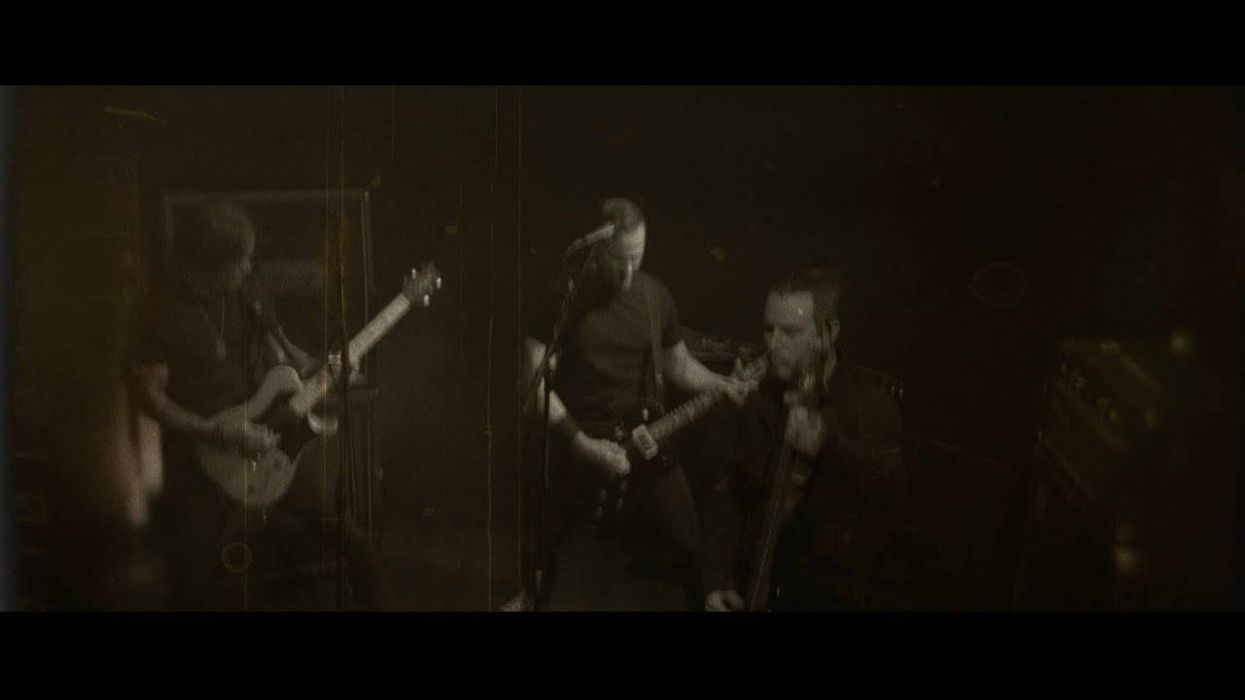| Print it! Click here to download a high-resolution, printable PDF of the notation. |
| Chops: Intermediate Theory: Beginner Lesson Overview: • Play some groovy hillbilly shuffle patterns. • Construct basic rhythm patterns using doublestops. • Refine your hybrid-picking technique. |
The mother of all truckerbilly songs is Dave Dudley's “Six Days on the Road.” For this lesson, I cherry-picked some of my favorite guitar fills played by Jimmy Colvard and adapted them into a concise rhythm guitar part. Jimmy's playing on this tune is very unique. The elements that stick out most are his use of backwards rakes into the flat 3rd and a “shimmy” fill that happens in the verses. This lesson will give you some new ways to play over a shuffle. Remember, “shuffle” refers to the feel of a song, not a set pattern that needs to be played. This genre is really fun to listen to and even more fun to play. I strongly encourage you to explore it and try to write some of your own tunes in this style.
Let's start with a shimmy lick shown in Fig. 1. This lick is going to use some hybrid picking (that's just a fancy way of saying pick and fingers). The lick is just embellishing a G7 chord by plucking the bass note and then dancing around the major third with double stops. Use your index finger on your fretting hand to barre across the third fret to make it easier to grab the F and Bb. As you can see in the TAB, we will start by plucking the bass note, hitting the double stop at the third fret and then returning to the bass note before playing two double stops that outline G7. This pattern repeats again but this time on the upbeat. This will make the accents shift creating a really cool rolling effect.
Download Figure 1 Audio...
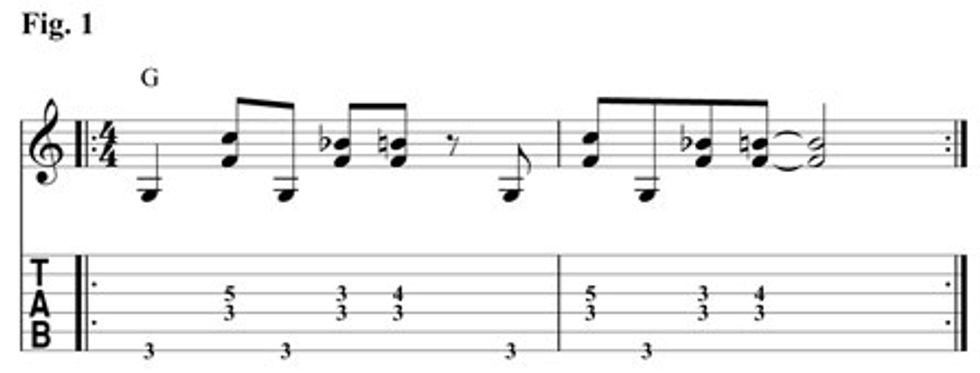
In Fig. 2 we will move that exact same pattern so that the root is on the fifth string. The fingering and rhythm stays the same, but some of the notes will change. For example, the double stops alternate between root/3rd and flat 7/9th.
Download Figure 2 Audio...
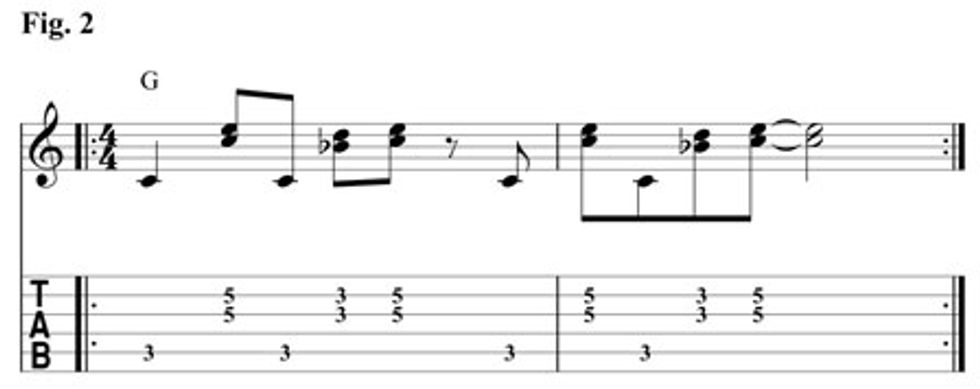
Fig. 3 shows how to play the rake. This is relatively easy. My index finger is barring at the third fret, but I'm releasing that tension so the strings are all muted. Now, place your pinky on the Bb at the sixth fret of the low E string. Then I'll start pulling the pick backwards from the third string down into the fretted sixth string. This is a great way to set up a new phrase or a chord change. The rake is there just for a percussive effect.
Download Figure 3 Audio...
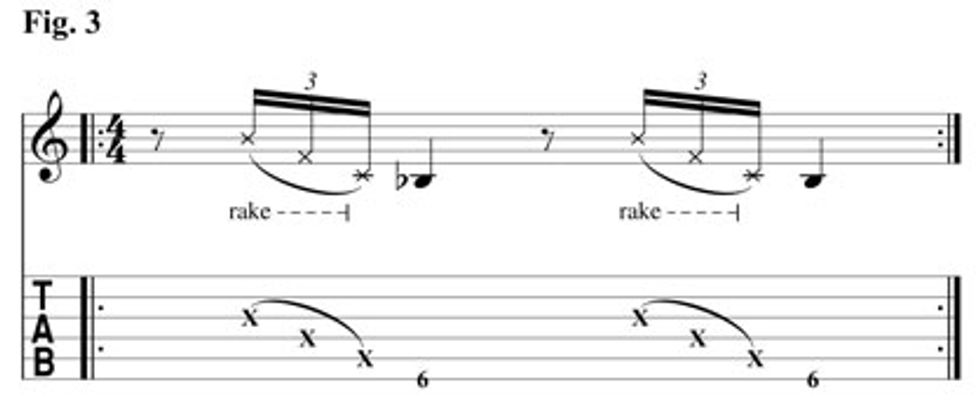
Alright, in Fig. 4 you can see the unholy marriage of these two concepts. I'm playing this over a simple 12-bar shuffle. Watch how the rakes set up each new phrase and check out how I divide the pattern in half when switching from D to C.
Download Figure 4 Audio...
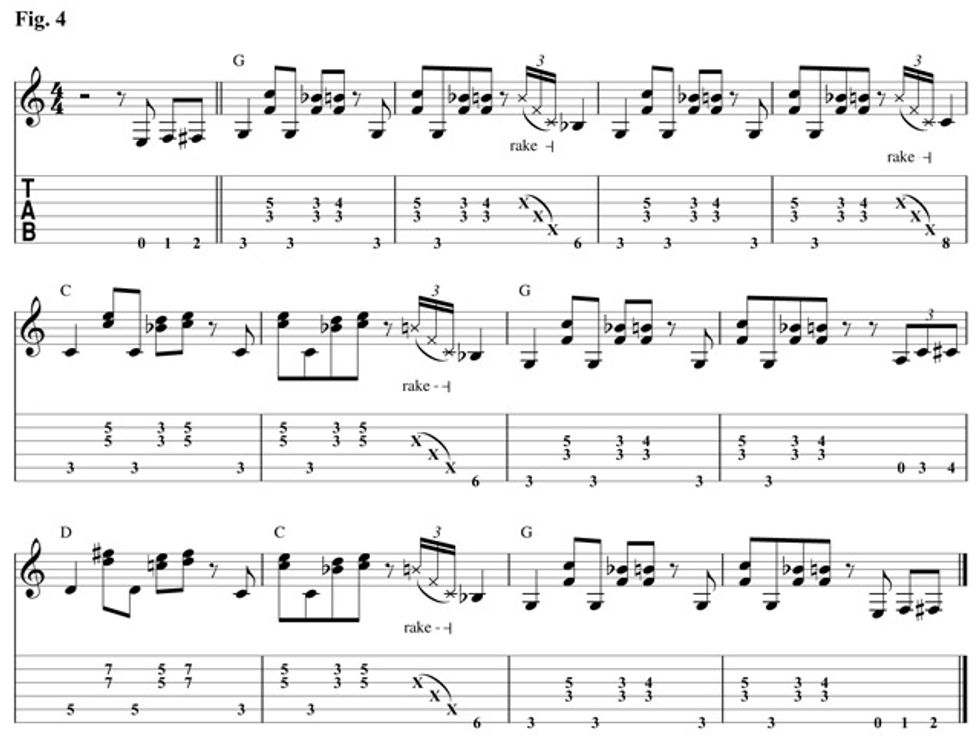
 Jason Loughlin has performed with Amos Lee, Rachael Yamagata, James Burton, Mike Viola, Nellie Mckay, Phil Roy, Marshall Crenshaw, Sara Bareillies, Lesley Gore, Ben Arnold and John Francis to name a few. Jason lives in Williamsburg, Brooklyn performing and teaching. Look out for his new record, Peach Crate, due out in February. For other info be sure to check his website jasonloughlin.com
Jason Loughlin has performed with Amos Lee, Rachael Yamagata, James Burton, Mike Viola, Nellie Mckay, Phil Roy, Marshall Crenshaw, Sara Bareillies, Lesley Gore, Ben Arnold and John Francis to name a few. Jason lives in Williamsburg, Brooklyn performing and teaching. Look out for his new record, Peach Crate, due out in February. For other info be sure to check his website jasonloughlin.com


